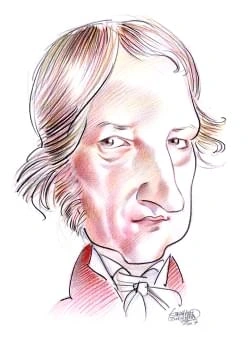2662 résultats pour "regions"
-
Simón Bolívar.
Again, he expressed his dislike of federalism and his preference for strong centralized republics. He felt that Venezuela and New Granada should unite into a centralizedrepublic, which would be called Colombia. This new republic would have an elected executive and a legislature consisting of an elected lower house and a hereditaryupper house. Lastly, he spoke about the need for a union of all the countries in Spanish America to ensure prosperity and security after independence. IV BOLÍVAR AS MI...
-
Global Warming.
some of the warming influence of increasing greenhouse gases. A1 Carbon Dioxide Carbon dioxide is the second most abundant greenhouse gas, after water vapor. Carbon dioxide constantly circulates in the environment through a variety of naturalprocesses known as the carbon cycle. It is released into the atmosphere from natural processes such as eruptions of volcanoes; the respiration of animals, whichbreathe in oxygen and exhale carbon dioxide; and the burning or decay of plants and other organic...
-
Indiana - geography.
Michigan in Michigan. There are about 1,000 small natural lakes in Indiana, chiefly in the northern part of the state. The largest is Lake Wawasee, which covers almost 13 sq km (5 sq mi). Inthe central part of the state there are several lakes that were created behind dams on a number of smaller streams. They include Monroe Lake, near Bloomington; Geistand Eagle Creek reservoirs, northeast and northwest of Indianapolis; and Mississinewa and Huntington reservoirs, north of Marion. C Climate Most...
-
Indiana - USA History.
Michigan in Michigan. There are about 1,000 small natural lakes in Indiana, chiefly in the northern part of the state. The largest is Lake Wawasee, which covers almost 13 sq km (5 sq mi). Inthe central part of the state there are several lakes that were created behind dams on a number of smaller streams. They include Monroe Lake, near Bloomington; Geistand Eagle Creek reservoirs, northeast and northwest of Indianapolis; and Mississinewa and Huntington reservoirs, north of Marion. C Climate Most...
-
Washington (state) - geography.
The crest of the Cascade Range divides Washington into two distinct climatic regions. The area west of the Cascades, which is exposed throughout the year to rain-bearing winds from the Pacific Ocean, has a temperate marine type of climate that is characterized by mild wet winters and cool summers. The Cascades prevent themoist air blowing in from the Pacific from reaching eastern Washington. The Rocky Mountains on the eastern border also represent a climatic barrier. As a result, thesevere winte...
-
Washington (state) - USA History.
The crest of the Cascade Range divides Washington into two distinct climatic regions. The area west of the Cascades, which is exposed throughout the year to rain-bearing winds from the Pacific Ocean, has a temperate marine type of climate that is characterized by mild wet winters and cool summers. The Cascades prevent themoist air blowing in from the Pacific from reaching eastern Washington. The Rocky Mountains on the eastern border also represent a climatic barrier. As a result, thesevere winte...
-
Arkansas - geography.
temperature rises to the upper 30°s C (lower 100°s F). C2 Precipitation Arkansas receives about 1,000 to 1,300 mm (about 40 to 50 in) of precipitation a year, and some areas receive even more. Most of the rain comes during winter andspring and at times is so heavy as to cause flooding. Snow is rare in the south but amounts to more than 250 mm (10 in) a year in the mountains. C3 Growing Season Arkansas has a long growing season. It averages 211 days for the state as a whole and ranges from 241...
-
Arkansas - USA History.
temperature rises to the upper 30°s C (lower 100°s F). C2 Precipitation Arkansas receives about 1,000 to 1,300 mm (about 40 to 50 in) of precipitation a year, and some areas receive even more. Most of the rain comes during winter andspring and at times is so heavy as to cause flooding. Snow is rare in the south but amounts to more than 250 mm (10 in) a year in the mountains. C3 Growing Season Arkansas has a long growing season. It averages 211 days for the state as a whole and ranges from 241...
-
-
La planète Mars
la planète jusqu'à en voiler entièrement la surface. Alors Mars ne présente plus aux yeux des observateurs qu'un visage orangé uniforme , comme cela s'est produit en 2001 , où une tempête, partie des bords de la calotte polaire sud en juin et s'amplifiant à un rythme de 2 000 km par jour, a inondé la planète en à peine deux mois. On ignore le mécanisme mis en jeu dans ce bouleversement météorologique, d'autant plus que ces tempêtes globales n...
-
Colorado - geography.
Although the rivers of Colorado are navigable only by small boats, they are important as a source of irrigation water for use in Colorado and adjoining states. However,the water level of the rivers fluctuates seasonally and from year to year. The level is generally low in winter and high in spring and summer, during the runoff of meltedsnow from the mountains. Colorado has no large lakes of natural origin, but there are numerous small lakes in the mountains. The largest bodies of water in Colora...
-
Colorado - USA History.
Although the rivers of Colorado are navigable only by small boats, they are important as a source of irrigation water for use in Colorado and adjoining states. However,the water level of the rivers fluctuates seasonally and from year to year. The level is generally low in winter and high in spring and summer, during the runoff of meltedsnow from the mountains. Colorado has no large lakes of natural origin, but there are numerous small lakes in the mountains. The largest bodies of water in Colora...
-
Pioneer (spacecraft) - astronomy.
The Pioneer Venus spacecraft contributed a tremendous amount of new information about Venus. Venus showed an enormous difference between night (-170°C, or -274°F) and day (40°C, or 104°F) temperatures in the highest regions of the atmosphere (the thermosphere during the day and the cryosphere at night) at altitudesbetween 130 and 200 km (between 81 and 120 mi). Below the clouds was a region of constantly high temperature and pressure and almost no wind. The Pioneer Venuscraft found the clouds ar...
-
lHistoire de la Normandie: L'enjeu des rivalités franco-anglaises durant quatre siècles 1982 323 800 911 1066 1204 1431 1468 1790
• Constatant la difficulté de gouverner en même temps des deux côtés de la Manche, Guillaume attribue à sa mort en 1087 le duché de Normandie à son fils ainé et l'Angleterre à son cade� Guillaume le Roux. • À la mort de ce dernier en croisade en 1100, le troisième fils de Guillaume le Conquérant, Henri Beauclerc, tente de réunifier le royaume anglo-normand : il s'empare du trône, débarque en Normandie et défait son frère à la bataille de Tinc...
-
Sweden - country.
mi) and is Sweden’s second largest lake, after Vänern. The two lakes, together with several smaller lakes, rivers, and canals, form an internal water route called theGöta Canal. Built in the early 19th century, the Göta Canal extends for about 386 km (about 240 mi) and provides a scenic transportation link between the Baltic Sea,at Stockholm, and the Kattegat. Sweden’s other large lakes in the district include Mälaren, Hjälmaren, and the famously picturesque Siljan. D Climate Although one-seven...
-
New Mexico - geography.
New Mexico’s major river is the Río Grande, originating in southern Colorado, and flowing southward for 760 km (470 mi) through the state. Between the San LuisValley and Española Valley the river flows in a deep canyon known as the Río Grande Gorge; then, below White Rock Canyon, it flows through several valleys containingagricultural land. Most of the water of the Río Grande is used to irrigate these valleys. The Río Grande’s waterflow in New Mexico is extremely low. One of the major tributarie...
-
New Mexico - USA History.
New Mexico’s major river is the Río Grande, originating in southern Colorado, and flowing southward for 760 km (470 mi) through the state. Between the San LuisValley and Española Valley the river flows in a deep canyon known as the Río Grande Gorge; then, below White Rock Canyon, it flows through several valleys containingagricultural land. Most of the water of the Río Grande is used to irrigate these valleys. The Río Grande’s waterflow in New Mexico is extremely low. One of the major tributarie...
-
-
Pays longtemps féodal, et toujours demeuré indépendant, le
Japon ne s'ouvrit au monde qu'avec l'ère Meiji, à partir de 1868.
mouvements de l'écorce terrestre. Les plaines, qui sont presque toujours périphériques et souvent recouvertes de limons d'origine volcanique, sont rares (moins d'un cinquième de la superficie totale), à l'exception de celles du Kantō (dans laquelle se trouve T ōky ō), de Niigata (sur la mer du Japon), de N ōbi (où se situe Nagoya) ou de Ishikari (plaine de Sapporo). Ces zones basses se raccordent aux hauteurs par des cônes d'alluvion qui constituent des reliefs de collines ou de terrasses. Compl...
-
Louisiana - geography.
lakes are on the Red River and its tributaries. In addition, small oxbow lakes are numerous in the Mississippi Alluvial Plain. Oxbow lakes are formed when a river cutsthrough the neck of one of its loops, or meanders, thus establishing a shorter course and leaving the former loop as a lake separate from the river. Louisiana also hassome artificially created reservoirs. C Coastline Louisiana’s long and irregular coastline extends along the Gulf of Mexico from the Pearl River on the east to the S...
-
Louisiana - USA History.
lakes are on the Red River and its tributaries. In addition, small oxbow lakes are numerous in the Mississippi Alluvial Plain. Oxbow lakes are formed when a river cutsthrough the neck of one of its loops, or meanders, thus establishing a shorter course and leaving the former loop as a lake separate from the river. Louisiana also hassome artificially created reservoirs. C Coastline Louisiana’s long and irregular coastline extends along the Gulf of Mexico from the Pearl River on the east to the S...
-
Alabama (state) - geography.
indentations along the coast are measured, the state’s shoreline is 977 km (607 mi) long. It includes the shores of Mobile Bay, an inlet 56 km (35 mi) long at the mouthof the Mobile River. Barrier beaches partly block the entrance to the bay, leaving narrow openings on either side of Dauphin Island. Dauphin and other islands alongAlabama’s coast west of Mobile Bay are separated from the mainland by Mississippi Sound. D Climate Alabama has a humid subtropical climate, with short, relatively mild...
-
Alabama (state) - USA History.
indentations along the coast are measured, the state’s shoreline is 977 km (607 mi) long. It includes the shores of Mobile Bay, an inlet 56 km (35 mi) long at the mouthof the Mobile River. Barrier beaches partly block the entrance to the bay, leaving narrow openings on either side of Dauphin Island. Dauphin and other islands alongAlabama’s coast west of Mobile Bay are separated from the mainland by Mississippi Sound. D Climate Alabama has a humid subtropical climate, with short, relatively mild...
-
Südamerika - geographie.
In den Gebieten nahe dem Äquator herrscht immerfeuchtes Tropenklima. Die Temperaturen sind ganzjährig hoch und variieren im Jahresverlauf nur gering. Die mittlerenJahrestemperaturen liegen um 25 °C. Niederschläge fallen zu allen Jahreszeiten, es gibt keinen Wechsel von Regen- und Trockenzeiten. Die Jahressummen betragenzwischen 1 500 und 2 500 Millimetern; am östlichen Rand der Anden werden aufgrund von Staueffekten bis zu 5 000 Millimeter verzeichnet. Mit einer Jahressumme vonetwa 11 000 Millim...
-
Oklahoma - geography.
portion and the Panhandle are classified as a steppe, where precipitation, typically 250 to 500 mm (10 to 20 in), is the controlling characteristic. January is usually the coldest month with an average of about 3°C (38°F) and extremes from -33°C (-27°F), the lowest ever recorded, to 33°C (92°F). Summer arelong and hot with temperatures in the upper 30°s C (lower 100°s F) common from May until September across the state. The growing season varies from less than 180days in the western Panhandle to...
-
Oklahoma - USA History.
portion and the Panhandle are classified as a steppe, where precipitation, typically 250 to 500 mm (10 to 20 in), is the controlling characteristic. January is usually the coldest month with an average of about 3°C (38°F) and extremes from -33°C (-27°F), the lowest ever recorded, to 33°C (92°F). Summer arelong and hot with temperatures in the upper 30°s C (lower 100°s F) common from May until September across the state. The growing season varies from less than 180days in the western Panhandle to...
-
-
New Jersey - geography.
C Soils Broadly defined, all of New Jersey’s soils are podzolic soils; that is, they are acidic and contain fairly high amounts of iron oxides. The soils in northern New Jersey areirregular in quality and contain rock fragments and small stones deposited by the continental glaciers of the last Ice Age. The soils of the inner coastal plain, unaffectedby glaciation, are the richest in the state, while those of the outer coastal plain are generally infertile. The newer soil classification system d...
-
New Jersey - USA History.
C Soils Broadly defined, all of New Jersey’s soils are podzolic soils; that is, they are acidic and contain fairly high amounts of iron oxides. The soils in northern New Jersey areirregular in quality and contain rock fragments and small stones deposited by the continental glaciers of the last Ice Age. The soils of the inner coastal plain, unaffectedby glaciation, are the richest in the state, while those of the outer coastal plain are generally infertile. The newer soil classification system d...
-
El Salvador - country.
III PEOPLE The Spanish subjugated the native population of El Salvador in the 16th century. Few Spanish women came to the country, however, so many Spanish men took NativeAmerican women as their mates. Today nearly 90 percent of the population is mestizo , of mixed European and Native American descent. People of purely Native American descent represent about 5 to 10 percent of the population, while people of European descent represent only about 1 percent. El Salvador’s population, 5.2 millio...
-
Switzerland - country.
formation over higher elevations. The wind reverses direction about sundown and moves down the valley as a cool downdraft. The foehn, which occurs during the wintermonths, is a dry and relatively warm airflow that is drawn northward over the Alps. The foehn can quickly melt snow and ice, increasing the risk of mudslides andavalanches. D Natural Resources Waterpower is the chief natural resource of Switzerland. The principal source of water is runoff from the considerable annual precipitation th...
-
L'Afrique centrale (géographie)
FAUNE ET FLORE Les forêts occupent 65% du territoire et recèlent comme l'ensemble du Bassin du Congo, une faune et une flore très riches, protégées dans des parcs nationaux comme celui d'Odzala, au nord-{)uest ou dans des réserves comme celle de Léfini, au sud-est PoPULATION Le Congo est dans l'ensemble peu peuplé et les habitants se concentrent surtout dans le sud, plus urbanisé, notamment à Brauaville (1 187 000 d'hab.), Pointe-Noire {576 300 ha...
-
La Plus Limpide Région
~------- EXTRAITS Le Dîner du capitalist e C'est là qu'ils ont vécu, c'est là qu'ils ont lutté, c'est là qu'ils sont tombés. Ainsi s'ouvre le roman Viens, laisse-toi tomber avec moi dans la cicatrice lunaire de notre vill e, ville poignée de bouches d'égout, ville cristal d'effluves et givre minéral, ville présence de tous nos oublis, ville aux falaises carnivores, ville douleur immobile, ville de la brièveté immense, ville du soleil arrêté,...
-
Indian Treaties in Canada - Canadian History.
Pontiac led an attack on British forts in the Great Lakes area to end British domination and to reinforce Indian autonomy. In response, British king George III issued theRoyal Proclamation of 1763 to try to appease the Indians of the interior. The proclamation set aside land for the Indians west of the Appalachian Mountains anddescribed this land as “lands reserved to [Indians] … as their Hunting Grounds.” The proclamation not only recognized Indian land ownership, but also required thattreaties...
-
Russland - geographie.
Stanowoigebirge und Dshugdshurgebirge. Im Fernen Osten erheben sich das Burejagebirge und der Sichote-Alin. 2.2 Küsten, Flüsse, Seen und Meere Russland hat von allen Ländern der Erde die längste, ununterbrochene Küstenlinie. Sie erstreckt sich entlang dem Nordpolarmeer und dem Pazifischen Ozean über mehr als32 000 Kilometer. Weitere Küstenabschnitte bestehen am Schwarzen Meer und Kaspischen Meer im Süden. Russland besitzt nur sehr wenige ganzjährig zugängigeMeereshäfen; der größte Teil der Küst...
-
-
Russland - geographie.
Stanowoigebirge und Dshugdshurgebirge. Im Fernen Osten erheben sich das Burejagebirge und der Sichote-Alin. 2.2 Küsten, Flüsse, Seen und Meere Russland hat von allen Ländern der Erde die längste, ununterbrochene Küstenlinie. Sie erstreckt sich entlang dem Nordpolarmeer und dem Pazifischen Ozean über mehr als32 000 Kilometer. Weitere Küstenabschnitte bestehen am Schwarzen Meer und Kaspischen Meer im Süden. Russland besitzt nur sehr wenige ganzjährig zugängigeMeereshäfen; der größte Teil der Küst...
-
Denver - geography.
percent of Denver’s population, blacks 11.1 percent, Asians 2.8 percent, Native Americans 1.3 percent, and Native Hawaiians and other Pacific Islanders 0.1 percent. Peopleof mixed heritage or not reporting race made up 19.3 percent of the population. Hispanics, who may be of any race, were 31.7 percent of the people. In 2006, Denver'spopulation was estimated at 566,974. IV EDUCATION AND CULTURE Since the very beginning of Colorado’s settlement, Denver has been the region’s thriving cultural hub...
-
Océanos y oceanografía - ciencias de la naturaleza.
El océano contiene el 97% del agua de la Tierra; en la atmósfera está el 0,001%. Los procesos que intercambian y transforman el agua en vapor, en líquido o en sólido sonfundamentales para el clima y para la propia vida. El agua es una de las sustancias más comunes, pero tiene algunas propiedades físicas y químicas inusuales. Es uno de los pocos líquidos naturales y puede encontrarse enlas tres fases: vapor de agua, agua líquida y hielo sólido. Tiene un calor específico y un calor latente grandes...
-
Ecuador - country.
F Natural Resources Ecuador’s main mineral wealth is in petroleum. Other mineral resources of the country include gold, silver, copper, lead, and zinc. Forests cover 38.3 percent of thecountry. G Plants and Animals Along the northern part of the Ecuador coast, and within the inner portion of the southern coast, tropical jungles abound. In some places the jungles extend up theslopes of the Andes as wet, mossy forests. Dense forests cover both flanks of the Cordilleras, as well as the Oriente, u...
-
Laos - country.
by the year 2025. About one-quarter of Laos’s people live in mountainous regions. The rest live in upland valleys or on the flood plains of the Mekong and its tributaries.Just over three-quarters of the population live in rural areas, although the proportion of people living in urban areas is steadily increasing. Vientiane is the capital and largest city of Laos. Louangphrabang, the former royal capital, is an increasingly popular tourist destination. Other major cities are theregional capitals...
-
Antarctica - geography.
The geographic South Pole lies near the center of the continent in East Antarctica. This point is where all map lines of longitude converge at the southern end ofEarth’s axis of rotation. Distinct from the geographic south pole is the south magnetic pole, where the lines of force of Earth’s magnetic field emerge vertically,arching upward over the planet to enter Earth again at the north magnetic pole. The south-seeking end of a compass needle points to the south magnetic pole. Thesouth magnetic...
-
Bhutan - country.
languages ( see Indo-Iranian Languages) and follow Hinduism. Nepalese people constitute a significant portion of Bhutan’s population. They are the most recent settlers, occupying south central and southwestern Bhutan. TheNepalese are mainly Rai, Gurung, and Limbu ethnic groups from the eastern mountains of Nepal. Nepalese immigration has been banned since 1959, when theBhutanese government feared the minority would become too populous. Nepalese are not permitted to live in the central Middle Hi...
-
Afghanistan - geographie.
3.2. 1 Feiertage Die weltlichen Feiertage in Afghanistan umfassen den Siegestag der muslimischen Nation (28. April), den nationalen Gedenktag (4. Mai) und den Unabhängigkeitstag(Jashn, am 18. August). Das Jashn-Fest erinnert an die Befreiung des Landes von der britischen Herrschaft im Jahr 1919 und dauert eine ganze Woche. Alle bedeutenden islamischen Feiertage richten sich nach dem Mondkalender und fallen daher jedes Jahr auf ein anderes Datum. Der Ramadan ist der Fastenmonat der Muslime. Der...
-
-
Australien - geographie.
und 3,7 Milliarden Jahren aufweist. Diese Formationen stellen zusammen mit der Antarktis das Herzstück des alten Kontinents dar, der sich vor weniger als 200 MillionenJahren im Jura von Gondwana abspaltete und in östliche und nördliche Richtung fortzudriften begann ( siehe Plattentektonik, Kontinent). Vor ungefähr 100 Millionen Jahren entstand Australien als eigenständiger Kontinent, nachdem sich die Antarktis abgetrennt und in südliche Richtung bewegt hatte. Auch heute noch entfernt sich derau...
-
Honduras - country.
A Principal Cities The capital and largest city of Honduras is Tegucigalpa (2006 estimate, 1,324,000), located in the south-central highlands region. The country’s second largest city isSan Pedro Sula (549,498). The principal city and commercial center in the north, it lies in the heart of the vast banana plantations on the Caribbean Sea. La Ceiba(127,590) and Puerto Cortés (90,161) are among the leading Caribbean ports. B Language and Religion Spanish is the official language and is spoken by...
-
Pakistan.
cinquantaine de pays à faible niveau de développement humain. Pays d’émigration (notamment vers le Royaume-Uni, l’Amérique du Nord, l’Arabie saoudite et les autres États du golfe Persique), le Pakistan a connu à partir desannées 1980 un afflux important de réfugiés en provenance de l’Afghanistan, qui s’est accentué avec la prise de pouvoir des talibans en 1998. Le nombre de ces réfugiésétait estimé à deux millions de personnes au milieu des années 2000. 3.2 Divisions administratives et villes pr...
-
Bangladesh - country.
F Environmental Issues Waterborne diseases such as cholera are a serious threat to public health in Bangladesh. Until the 1970s, many of Bangladesh’s people became sick from drinkingpolluted water drawn from surface rivers. Aid agencies such as the United Nations Children’s Fund (UNICEF) built shallow wells throughout the country to help provide asafe source of drinking water to Bangladesh’s poor. In the 1990s, however, it was discovered that many of these wells were contaminated by arsenic, a...
-
Zimbabwe - country.
contamination—especially from the dieldrin and DDT used in tsetse fly control—has significantly affected wildlife and human health. III PEOPLE AND SOCIETY OF ZIMBABWE In 2008 Zimbabwe’s population was estimated to be 12,382,920, giving the country a population density of 32 persons per sq km (83 per sq mi). With a birth rate of27 per 1,000 and a death rate of 22 per 1,000, Zimbabwe’s population growth rate is 0.6 percent. Life expectancy at birth was estimated at 40 years in 2008, downfrom 59...
-
Irak.
1
PRÉSENTATION
Irak, en arabe Al `Ir?q, pays du Proche-Orient. Sa capitale
3.2 Découpage administratif et villes principales L’Irak est divisé en 18 gouvernorats (muhafaza) dont 3 sont des régions autonomes kurdes. La population irakienne est citadine à presque 67 p. 100 (contre 66,2 p. 100 en 1980). L’exode rural s’est fortement accéléré au cours des années 1980-1990 en raison desguerres qui ont ravagé le pays. Bagdad, la capitale, compte environ 3,2 millions d’habitants (estimation 1996). Située dans le centre du pays, sur la rive gauche du Tigre,elle constitue l...
-
Article de presse: Lendemains de fête en Asie
réserve, sur la reprise des exportations dopées par les dévaluations des monnaies. Situations transitoires " Nous avons confiance dans les perspectives de croissance future de la région, et estimons que la crise actuelle se révéleratransitoire pour peu que ces économies comblent les insuffisances de leur système financier ", a expliqué, le 11 septembre àHongkong, un des responsables de la Banque mondiale pour l'Asie du Sud-Est, Javad Shirazi. " A l'exception de la Thaïlande,ces économies o...
-
Toronto - geography.
now a museum. In the far northeast side of the City is the Toronto Zoo, a modern zoo covering many acres and with well-designed animal displays. Originally known as the SkyDome, the Rogers Centre is a state-of-the-art stadium complex that opened in 1989. The stadium features a retractable roof that can openin 20 minutes to expose the playing field and most of the 50,000 seats to the open air. It is the home of the Toronto Argonauts of the Canadian Football League and theToronto Blue Jays of Majo...
-
-
Toronto - Geography.
now a museum. In the far northeast side of the City is the Toronto Zoo, a modern zoo covering many acres and with well-designed animal displays. Originally known as the SkyDome, the Rogers Centre is a state-of-the-art stadium complex that opened in 1989. The stadium features a retractable roof that can openin 20 minutes to expose the playing field and most of the 50,000 seats to the open air. It is the home of the Toronto Argonauts of the Canadian Football League and theToronto Blue Jays of Majo...
-
Grèce.
La population du pays est grecque à environ 93 % ; les principales minorités sont les Turcs (en Thrace en particulier), les Albanais et les Arméniens. La Grèce a longtempsété un pays à forte émigration, et une importante diaspora grecque s’est constituée dans le monde entier (estimée à 4,3 millions de personnes), en particulier en Australie,en Amérique du Nord (États-Unis et Canada) et en Allemagne. Le pays est aujourd’hui confronté à l’arrivée d’immigrés d’Asie du Sud-Est et d’Europe centrale,...
}})








